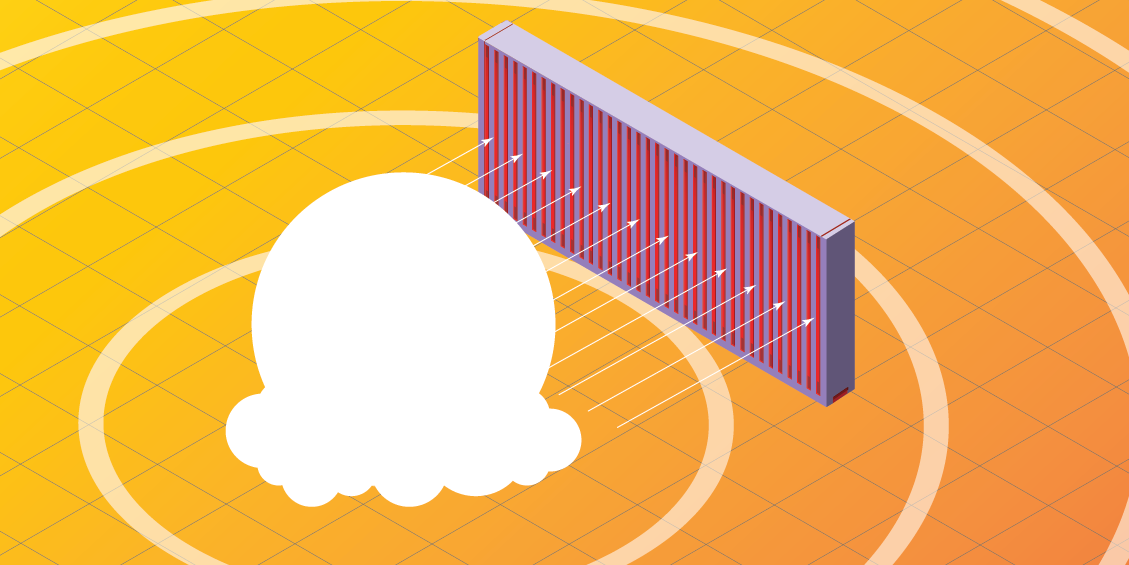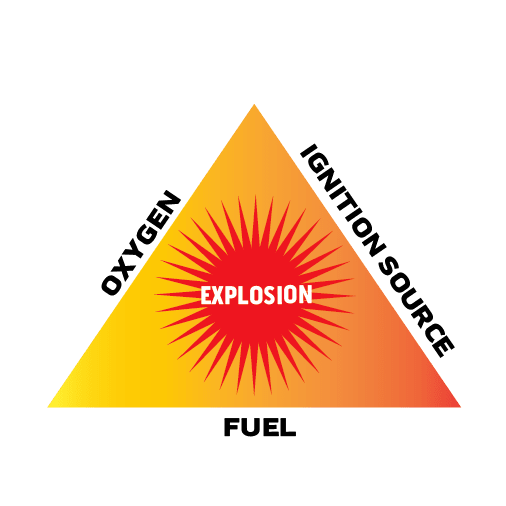Terminology | Threat Protection Types | Industries | Design and Engineering | Safety and Regulations | Blast Resistant Buildings
What Is The Purpose of a Blast Wall?


When it comes to blast resistance, there are a few options, depending on the situation. At RedGuard, we design blast-resistant buildings to protect building occupants and equipment in high-hazard areas from the damaging effects of explosions.
However, we are sometimes asked about blast walls and how they compare. In this article, we’ll talk about what a blast wall is and how it protects, plus, we’ll go into the best solution for your hazardous areas.
What is a blast wall?
A blast wall is simply a barrier used to protect the facade of a vulnerable structure and its occupants from debris and fire during an explosion or attack. The danger might come from an industrial accident, military action, or terrorism. They can also be used for construction, military, mining, airports, and processing facilities.
A blast wall is typically erected to safeguard a building and its occupants when a temporary threat is identified, after construction of the building is complete. Blast walls are usually added to structures that didn't require and had no blast resistance before the threat was identified.
On the other hand, a blast-resistant building is specifically used for occupied buildings or buildings that contain high-cost or specialty equipment, in areas where hazards could reasonably (or even likely) be expected. The entire building is blast-resistant, rather than just protecting one side, or the facade, of the building.
The Purpose of a blast wall
A blast wall is a temporary wall placed when a controlled explosion is planned, or when the likelihood of an accidental explosion or attack is identified. The threat it protects against might be seen as an anomaly.
Like a blast-resistant building, a blast wall can be steel or concrete. And, also like blast-resistant buildings, steel is a superior choice since it is strong, long-lasting, durable, and malleable. Concrete, when used in both blast-resistant buildings, or in blast walls, is less desirable due to its vulnerability to condensation. The effects of condensation, in areas where moisture is common, might be subtle. Condensation can form on concrete, which can slowly be absorbed into the concrete and eventually weaken the structure.
Steel's ruggedness allows the wall to stand up to the explosion, and its malleability allows it to absorb some of the energy during a blast.
By its very nature, a blast wall protects the structure from only one side, and the blast wave can affect a structure from all sides and the top.
When should a blast wall be used?
To determine when a blast wall should be used, you must understand the type of hazards that could be present in the area it is placed. For example, in areas where the threat is seen as temporary, a blast wall might be enough to deflect shrapnel or simply protect the vulnerable structure of the building itself. In addition, blast walls can be combined to protect from multiple sides.
They are sometimes used in war or conflict zones, or as barriers during a planned explosion. In addition, military bases or airports might use them to protect aircraft or other expensive equipment. They can be used underground or underwater, and are used in multiple industries, many overlapping with industries that utilize blast-resistant buildings.
Blast Resistant Buildings are Made for Hazardous Areas
On the other side of the coin, there are areas officially classified as hazardous that contain a potentially explosive atmosphere due to ignitable gases, dust, vapor, or fibers and other particulates. The Occupational Health and Safety Administration, or OSHA, divides hazardous areas into three separate classes, with two divisions in each class.
 A fire or explosion is possible, even likely, in a hazardous area when three conditions are met. This is referred to as the “combustion triangle,” and those three conditions are:
A fire or explosion is possible, even likely, in a hazardous area when three conditions are met. This is referred to as the “combustion triangle,” and those three conditions are:
- Fuel
- Oxygen
- Ignition Source
Whenever possible, it is best to avoid placing occupied buildings in hazardous areas. However, if that can not be avoided, that’s when blast-resistant buildings are added.
As a leader in the design and manufacture of blast-resistant buildings, we've worked with many worksites to keep those who work inside hazardous areas safe and we've even written previously about managing risks in hazardous areas.
Carreen Gibbons
Carreen Gibbons is the Communications Specialist at RedGuard. With a natural curiosity toward technical subjects and a love of learning new things, she writes content for the SiteBox Storage and RedGuard websites and spends her days learning new things about the industries that the companies serve.

